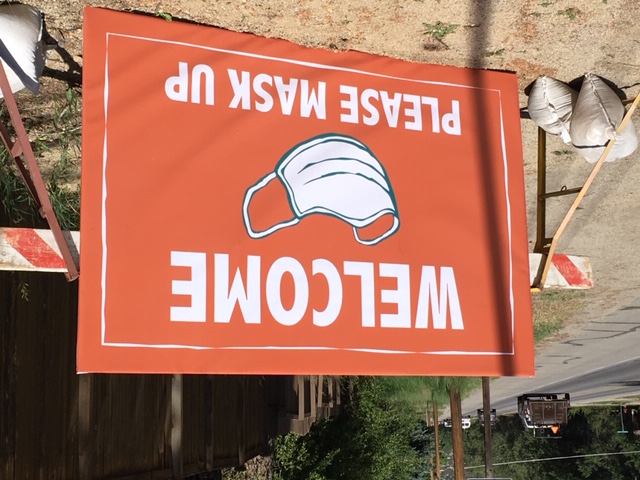Cases and hospitalizations have plateaued in the state, but at high levels, cautions Chaffee County Public Health Director Andrea Carlstrom, speaking during the Chaffee County COVID-19 Roundtable on Thursday March 18. The next two months could be the critical ones as the race to vaccinate meets the rising number of COVID variants.
Chaffee County continues in the “Blue” (caution) level of the state’s COVID Dial. “Locally we’ve had no cases today (Thursday) five cases in the past seven days and seven in the past 14 days,” explained Carlstrom.
Regarding infection rates for Colorado, “it’s one in every 354 Coloradans that are infected. We are a bit concerned, we could reach summer levels by mid-April. Our five-county level (Chaffee, Lake, Park, Fremont, and Custer counties) is 12 cases for every 422 people. Some 11.6 percent of our regional population has been infected. But our vaccinated population is 20.8 percent.”
Carlstrom says that assuming no further spread of variants, the success of this state to move out of the restrictions is going to come down to working on transmission control levels.
“We are at 82 percent transmission control now. But if we slip to 50 or 60 percent, that won’t be good. If we stay right where we are we’ll see 220 more deaths in Colorado between March 8 and June 1. But deaths go up to 441 if we slip down to 70 percent … and if we go down to 60 percent we’ll see 1,024 deaths.”
By mid-April, about 50 percent of COVID-19 infections will be the B117 variant, and by June, 95 percent of cases will be the B117. At the moment Chaffee is the only Colorado county seeing the B117 – South African variants, which is more infectious than the original virus.
“The next four to six weeks are so critical,” said Carlstrom. “As far as local public health is concerned – our focus is to get as many vaccinated as possible. We began on 1B.4 today, Thursday. We are still number four in the state in total vaccinations.”
 Carlstrom said that the state’s face mask mandate will continue until at least April 4. “We are seeing a trend in our community that people are lifting the mask mandate on their own – it may be due to offices and businesses being vaccinated. But we NEED to hold tight on the mask mandate. I am working on some guidance for post-vaccinated homes and offices if they don’t interface with the public … even if facemasks aren’t a requirement — it is a best practice.”
Carlstrom said that the state’s face mask mandate will continue until at least April 4. “We are seeing a trend in our community that people are lifting the mask mandate on their own – it may be due to offices and businesses being vaccinated. But we NEED to hold tight on the mask mandate. I am working on some guidance for post-vaccinated homes and offices if they don’t interface with the public … even if facemasks aren’t a requirement — it is a best practice.”
Carlstrom says that public health professions hope that the state and county will hold off on considering changes until the ski season ends and until the school semester ends. At the moment, with the county loaded with spring break tourists, facemask-wearing is a particularly important mandate.
“We saw a dramatic shift in mask-wearing with the statewide mask mandate – it gives local public health heartburn thinking we might be moving in a different direction … we’ve come so far. The efforts we’ve made to create this stable but delicate environment we are in right now could be undone.”










Recent Comments